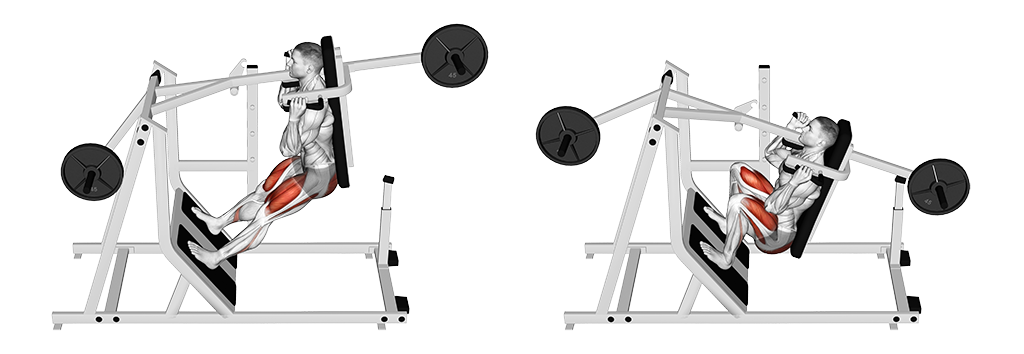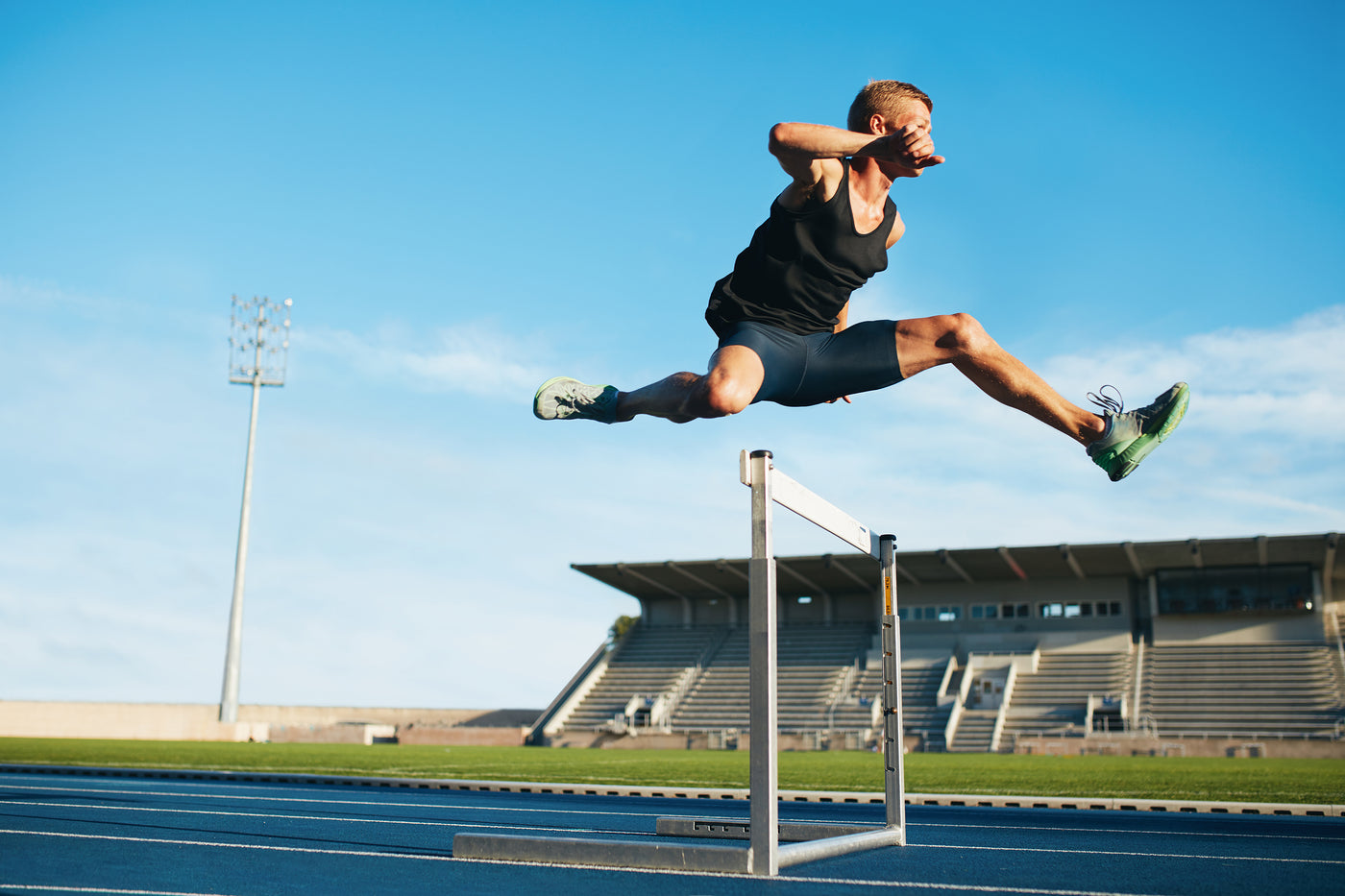Exercise Anatomy
Machine Squat
Discover the efficiency and accessibility of the Machine Squat-a potent variation of the classic squat. Engineered for stability and ease of use, this exercise targets your lower body with precision. Embrace the controlled movement and customizable resistance of the machine squat to sculpt powerful legs and amplify your strength training routine. Whether you're a novice or a seasoned lifter, the Machine Squat offers a straightforward yet impactful way to elevate your leg day and enhance overall lower body strength.

Major Muscles and Actions Involved
The Machine Squat, a versatile lower-body exercise, centers around the joint action of knee extension. This compound movement involves the straightening of the knee joint, effectively engaging the quadriceps, hamstrings, and glutes.
As you descend into the squat position on the machine, the quadriceps play a primary role in extending the knee, while the hamstrings and glutes provide stability and support. The machine's guided path allows for a controlled range of motion, ensuring optimal activation of these muscle groups.
Additionally, the gastrocnemius and soleus muscles of the calves are involved to a lesser extent, aiding in stabilizing the ankle joint during the movement. The Machine Squat provides a targeted approach to strengthening the lower body, making it a valuable addition to training regimens for those aiming to build muscular endurance and enhance overall leg strength.

Sports Uses
The Machine Squat, with its controlled and guided movement, proves to be of direct benefit in various sports, catering to athletes seeking targeted lower-body strength and stability.
In the realm of bodybuilding, the Machine Squat becomes a cornerstone for sculpting well-defined quadriceps, hamstrings, and glutes. Bodybuilders aiming to enhance the aesthetics of their lower body often incorporate this exercise to isolate and develop specific muscle groups with precision.
For athletes involved in powerlifting, the Machine Squat offers a valuable accessory movement. By targeting the major muscle groups involved in the traditional squat—quadriceps, hamstrings, and glutes—the machine version helps reinforce the foundational strength required for heavy lifting, contributing to improved performance in the squat and deadlift.
In sports like basketball and volleyball, where explosive leg power is crucial for jumps and quick directional changes, the Machine Squat can be an effective training tool. Athletes can focus on building strength in a controlled environment, translating the gains to on-court performance.
Track and field athletes, particularly sprinters, benefit from the Machine Squat's ability to isolate and strengthen the quadriceps. This targeted development can contribute to more powerful and explosive starts, a critical factor in sprint events.
In rehabilitation settings, the Machine Squat proves valuable for individuals recovering from knee injuries or surgeries. Its guided and controlled nature allows for a safer reintroduction to lower-body strength training, aiding in the rehabilitation process.
Overall, the Machine Squat finds application across a spectrum of sports and fitness goals, providing a versatile and controlled approach to lower-body strength development. Whether for aesthetic sculpting, powerlifting support, explosive sports performance, or rehabilitation, this exercise offers athletes and fitness enthusiasts a targeted means to amplify their lower-body capabilities.
Exercise Analysis
- Technique:
Prioritize proper technique in the Machine Squat to maximize effectiveness and minimize the risk of injury. Maintain an upright posture, engage your core, and ensure your knees track in line with your toes throughout the movement. Focus on a controlled descent and ascent, avoiding abrupt or jerky motions. - Range of Motion:
Embrace a full range of motion in the Machine Squat while maintaining control. Descend until your thighs are parallel to the floor or lower, ensuring the machine's guided path allows for a complete extension of the knees. This comprehensive range optimally engages the quadriceps, hamstrings, and glutes. - Amount of Weight Used:
Start with a moderate amount of weight when beginning the Machine Squat. Focus on mastering the movement pattern and gradually increase the resistance as your strength improves. Strive for a challenging load that allows for controlled repetitions while maintaining proper form throughout the set. - Variations:
Explore different foot placements and angles to target specific muscles during the Machine Squat. Varying foot positions, such as a narrow stance or a wider stance, can emphasize different aspects of the quadriceps and glutes. Experimenting with these variations adds diversity to your training and addresses specific muscle development goals. - Breathing:
Establish a consistent breathing pattern during the Machine Squat to support stability and control. Inhale deeply before initiating the descent, and exhale as you push through the movement. Maintaining a controlled breathing rhythm not only enhances core engagement but also contributes to overall lifting efficiency and focus during the exercise.
